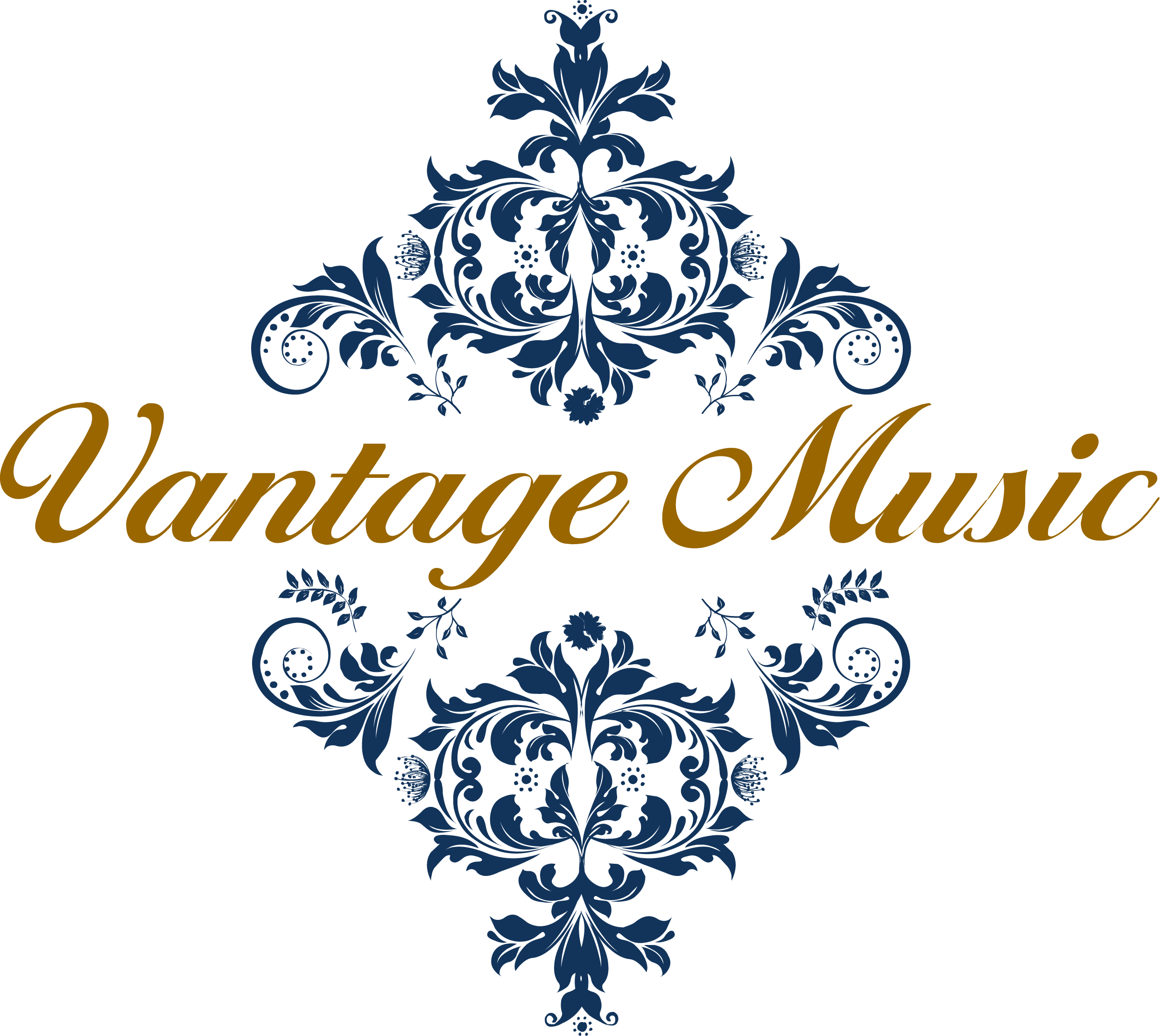Vantage Music | California | November 2019
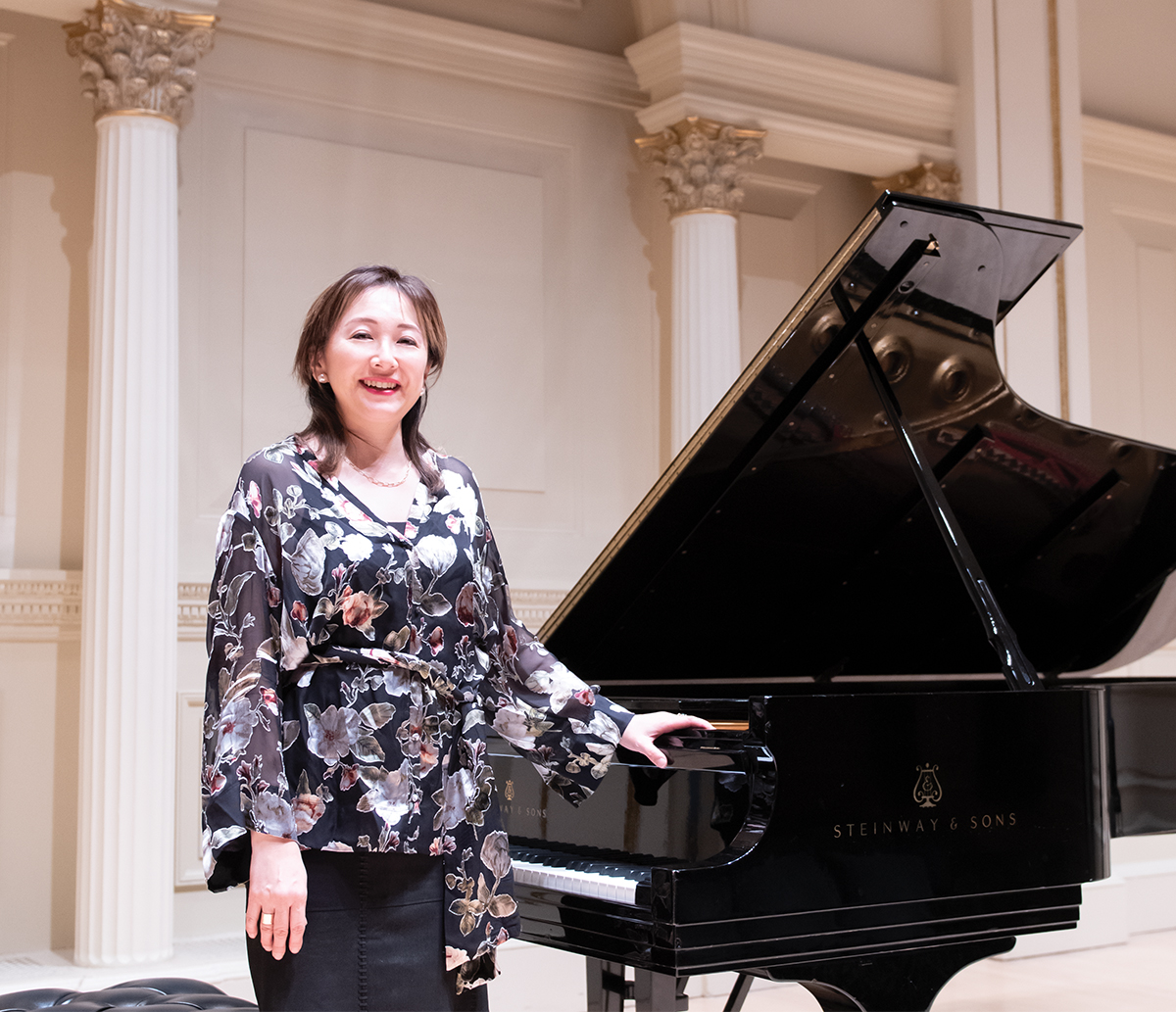
2020 marks the 250th year since the birth of Ludwig van Beethoven. His exact date of birth is uncertain but it’s believed he was most likely born on December 16, 1770, the day before the recorded date of his baptism. This year, the brilliant Japanese-American pianist, Tamami Honma, is releasing a ground-breaking recording of the complete 35 Beethoven Piano Sonatas based on the latest research incorporated in the critical edition by the Beethoven scholar, Dr. Barry Cooper. Her recordings from Divine Art will set a new standard by not only bringing these new discoveries to our ears for the first time but also by including Beethoven’s first three piano sonatas, written at the dawn of his career as a composer. Although some artists have made separate recordings of these early sonatas, surprisingly most previous “complete” recordings have ignored these early works. Yet as Ms. Honma explains in this Vantage interview, they are an essential part of understanding Beethoven’s incredible journey as one of the world’s giants in western music.
Ms. Honma is firmly rooted in the great romantic and classical traditions, having studied piano performance extensively in New York City under the legendary Byron Janis, who in turn was a student of Vladimir Horowitz. She then moved to London to pursue her Master’s degree, then became a faculty member in the academic department at the Royal Academy of Music in London for several years before joining the vocal and ensemble coaching staff at the San Francisco Conservatory of Music and becoming a staff collaborative pianist at Stanford University’s Department of Music. She is in great demand as a soloist and just in the past year she performed Rachmaninoff Piano Concertos 3 & 4, Britten’s Piano Concerto, Tchaikovsky’s Piano Concerto No. 1 and Gershwin’s Rhapsody in Blue with orchestras in the San Francisco Bay Area.
Ms. Honma is renowned both as a performer and a recording artist. Her energetic and sensitive renditions of works both famous and less well known have attracted widespread praise, as a soloist at Bolshoi Hall with the Moscow Radio Symphony Orchestra, at Carnegie Hall – ‘an eloquent, powerful performance’ (New York Times), and at Wigmore Hall in London – ‘an interpretation that was probably as transparent and faithful to the Goldberg Variations as it’s possible to be on a modern piano’ (Music & Vision). She has frequently appeared on radio and television in Europe and in the US and participated in major music festivals such as the Aldeburgh Festival and the Warsaw Autumn. Her recordings ranging from Mozart, Chopin to new composers, have won high accolades in BBC Music Magazine, Gramophone, International Music Review, and she has been featured in Yomiuri Shimbun, The Guardian, The Independent, and various US newspapers. She was awarded a medal by the government of Lithuania for acting as their cultural ambassador after they gained independence from the USSR in 1991 which facilitated their entry into the European Union.
In this interview, we sat down with Ms. Honma to find out more about her new Beethoven project and her goals for the future.
V: You recorded quite a few CDs including two acclaimed discs of works by Chopin and discs featuring 20th century composers John McCabe and Alan Rawsthorne some 20 years ago. Now you are returning to the recording studio with what promises to be a landmark project to release the complete 35 Beethoven Piano Sonatas for this year’s 250th anniversary of Beethoven’s birth. What made you decide to take on this ambitious project?
T: I think the first recording of piano music I ever heard that I felt really moved by was on my mother’s record-player in Japan when she was playing recordings by Wilhelm Kempff and Artur Schnabel. She had recordings of the then “complete” thirty-two Beethoven Sonatas by both of them and I really enjoyed listening to them – and I still do. But you know, as a child, you don’t think that’s something you yourself are actually going to do one day (make your own recording) — it seems like such an epic undertaking. You just think that’s something great that other people have done. Yet just like every student learning how to play the piano, my teachers frequently gave me some Beethoven piece to work on. I can’t remember a time when I didn’t have a work by Beethoven to study. And over time I guess I had ended up performing a lot of them without necessarily having an end in mind such as playing them as a complete cycle myself one day. At the Royal Academy of Music in London the main focus of my Master’s degree was Beethoven aesthetics. The first part of the year centered on the dialectic between classical and romantic elements in Beethoven’s music and his compositional process, and in my second year I conducted comparative studies on tempo modifications in performance practice, across various editions, and writings by his contemporaries (later published as an article in the journal Arietta by the Beethoven Society of Europe).
After taking time out to raise a family, during this hiatus away from performances, I had time to reflect on what I would like to do next. I felt that I really wanted to know more about Beethoven and as luck would have it, in recent years, I was asked by various conductors and orchestras to play many of Beethoven’s piano works such as the five Piano Concertos, the Triple Concerto, and the Choral Fantasy while also working on the 9th Symphony with the San Jose Symphonic Choir across several years (I’m their rehearsal pianist and effectively their orchestra on the piano for performances on occasion). As assistant conductor, I also led sectionals and sometimes even participated as a soprano or alto in many of the large works they presented, so I got to know these choral works in more depth through this process. Then a few years ago I put on a series of concerts called “Beethoven Odyssey” that featured all of the piano sonatas and then all of the violin sonatas. I have also performed all of the cello sonatas and many of his other chamber music works involving the piano. I have often been invited to coach voice, other instruments and ensembles in various higher institutions, so through those experiences as well, I had the chance to work from perspectives other than that of a pianist so that has given me invaluable insights when reading piano parts again.
At a certain point I really felt more confident about Beethoven to bring something new to recordings of the piano sonatas. The fact that it would be Beethoven’s 250th anniversary was almost accidental in arriving at this culmination. But there’s an additional fortuitous circumstance to my decision to record the complete sonatas — Professor Barry Cooper is a musicologist in the UK who has written books about Beethoven and is someone who I have much enjoyed reading over the years. His critical edition of the Beethoven Piano Sonatas published by the Associated Board of the Royal College of Music came out about ten years ago but I am not sure how widely it has been used for recordings. He has done an amazing job in drawing upon all of the available sources for the sonatas and correcting numerous mistakes that have made their way into previous editions. So it seemed like the perfect time to make a new recording of these works that takes into account all of the latest scholarship on the composer’s intentions.
V: One thing that will also distinguish your new collection is the fact that it is the first truly complete collection. When other people talk about the complete sonatas, they mean the 32 works that have opus numbers. But in your collection, you are including the three sonatas without opus – three sonatas Beethoven wrote when he was only twelve. Presumably people dismissed these works in the past as perhaps not worthy compared to his mature works. What’s your feeling about that?
T: I feel that people have been far too dismissive of these works. I took my cue, in part, from Dr. Cooper who included the three youthful sonatas in his edition of the 35 complete sonatas. And in his wonderful commentary on all of the sonatas, he makes the point that there is really little justification for excluding these works from a complete collection. When people talk about the 32 Sonatas as being complete they are, of course, including the two little Opus 49 “Leichte” Sonatas which Beethoven wrote in his early twenties as a commission for friends or students, but at the time he didn’t think they were worthy of publishing. It was his brother Carl, who arranged for these works to be published many years later. Carl, for a time, helped the great composer with his business dealings, and saw this as an easy way to make some money. So despite Beethoven’s misgivings, these two works were eventually published. These two “Light” Sonatas are shorter and less complicated than the three teenage sonatas that people have widely ignored. The three early sonatas also contain numerous hints of the things that were to come.
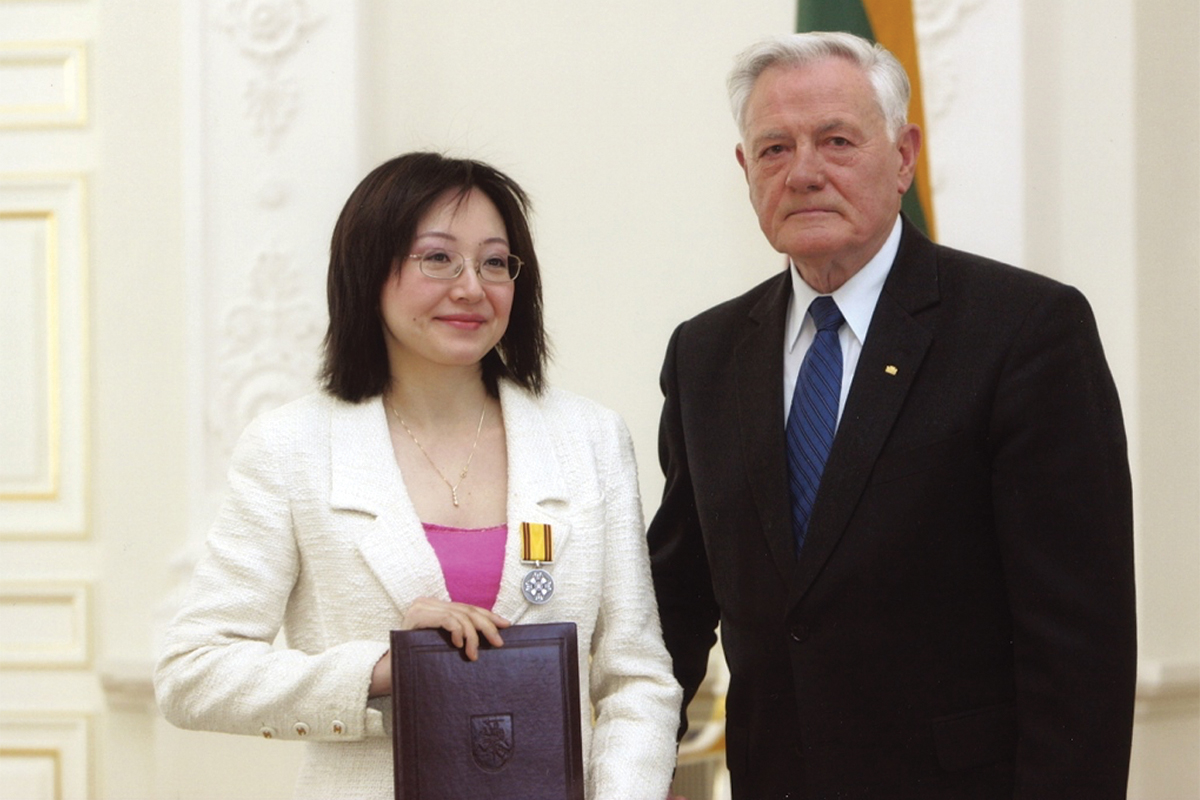
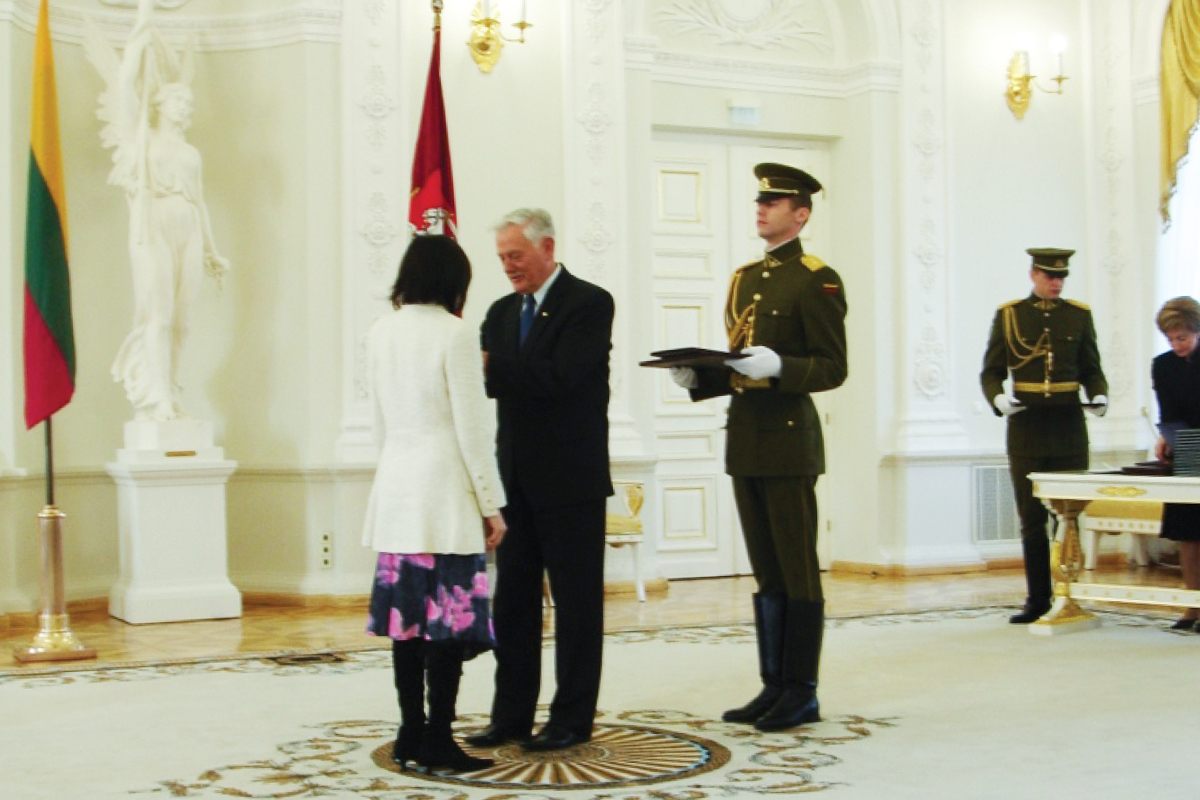
At the presidential palace in Lithuania, Tamami was awarded a medal by the former President Adamkus of Lithuania for acting as their cultural ambassador (2004).
The second sonata has some revealing passages – remarkable for a 12-year old – that foreshadow the opening structure and even one of the main themes of the Pathétique. The second movement of the same sonata even contains hints of the fugal theme that Beethoven deployed in Op 110, the penultimate sonata that he wrote towards the end of his life. So if we include the “Light” Sonatas – and don’t get me wrong, these two works are still very fine and very much worth listening to – why not the three earlier ones? The other point I would make is that the 32 Sonatas already encompass much of Beethoven’s musical career from his early days in Vienna when he was in his early twenties to his late period at the end of his life. They offer a fantastic window to Beethoven’s development as a composer. So why exclude the opening chapter of his life where we can see the seeds of the ideas that came into full flower later on? In fact, among all of Beethoven’s works, the complete set of the piano sonatas offers the most comprehensive view of how Beethoven’s style changed over the years. So to exclude the very beginnings of this story doesn’t make much sense.
V: Given your aspiration to return to Beethoven’s original intentions, what do you make of the argument about his metronome markings sometimes being unrealistic? He set a tempo for the first movement of the extremely difficult Hammerklavier Sonata, for example, at a speed that has been described as unplayable. What did you decide about that?
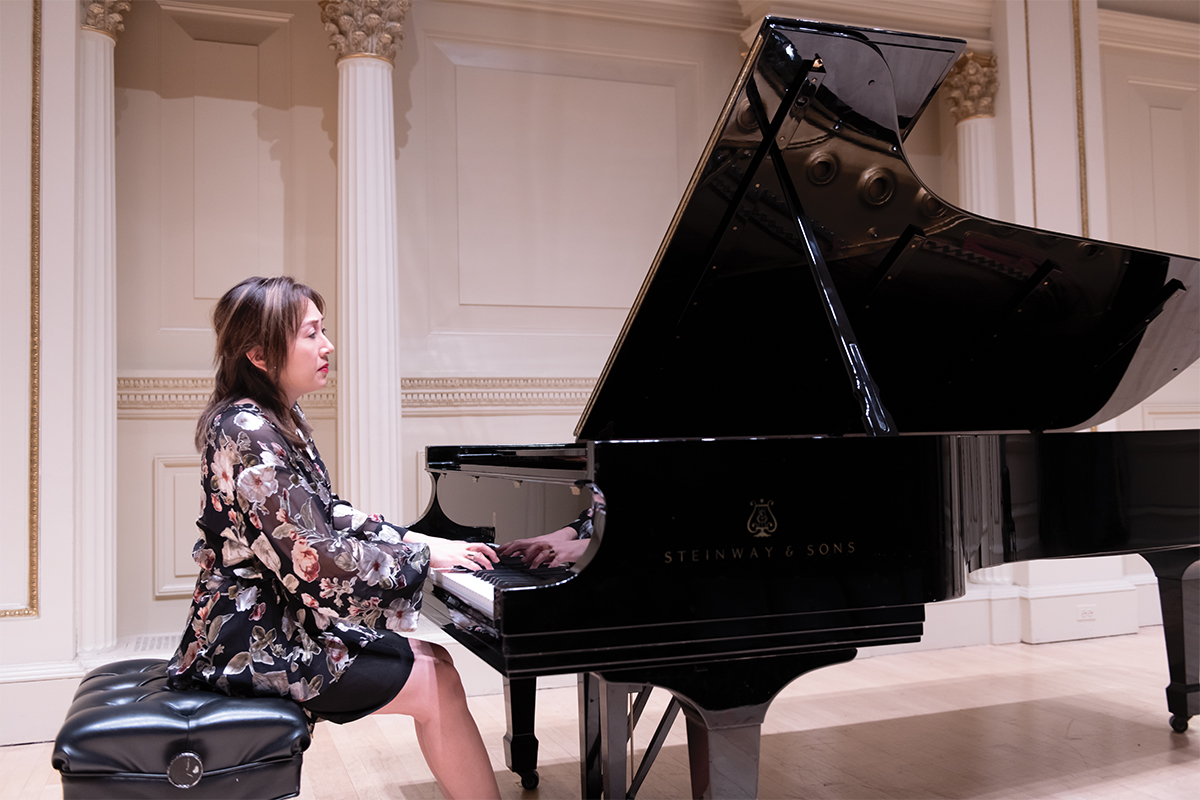
T: I touched on this in the paper I wrote about the subject of tempo modifications for the Beethoven Society of Europe when I was still a student some 20 years ago. There’s something called “com’e scritto” – “as it is written” – that Toscanini was big on. It came from a time when Stravinsky had said that all his markings, including metronome markings, had to be strictly followed: ‘It must be this way’, he would say very authoritatively, and everyone had to go with that. These two were musical giants so, of course, everyone listened and began to read music more through this type of lens.
People took their words so seriously to the point that we started believing that that is the way all composers wanted their music performed. But not all composers meant for us to adhere to one number or to every marking – music is so much more than that: it needs to breathe. Moreover, playing without flexibility doesn’t agree with the Romantic style of interpretation, with what we have on recordings nor with what was written by contemporaries about the performance practice of the day. To paraphrase Ferruccio Busoni, the written score is already a transcription of the original music that the composer hears in his mind, and it’s up to the performer to help realize and complete the compositional process.
Regarding Beethoven’s metronome indications, the only ones he provided in the piano sonatas were in the Hammerklavier, Op 106. And the opening movement tempo of minim/half note = 138 is indeed very fast but it’s well known that Beethoven also said in another work that his metronome markings should only apply to the opening bars. So while the opening bars of the Hammerklavier are playable at his suggested speed, it’s not unreasonable to take other passages a little slower. Dr. Cooper also suggests that Beethoven may have simply misread his metronome and that he intended a figure of 108, which would have been more compatible with the Allegro marking for this movement. So we simply don’t know for sure and because of this I think it’s okay to play the opening declamatory statement at the fast speed but apply freedom and space as was probably intended elsewhere. Also it would be well advised not to rush through Beethoven’s denser fugues such as those in the Hammerklavier, because opting for a tempo that is too fast can risk obscuring the listener’s ability to hear the interesting motion of the independent voices. There’s a lot for a player to consider before they become too fixated on making artistic choices that revolve solely around prioritizing one tempo number.
I do think it’s important to observe and to try to make sense of Beethoven’s phrasing, articulation, dynamics and pedal markings. Barry Cooper’s edition of the Beethoven Sonatas provides a wealth of notes and corrections to these based on his meticulous research of original manuscripts and first editions. I think listeners will be in for some surprises when they hear my recordings if they are used to the way previous artists have played these works. That’s because some of the articulations, dynamics and even some of the notes are different in previous published editions. I have followed Dr. Cooper’s amendments and it sometimes puts a different complexion on these works. One example is near the beginning of the E flat Sonata Op 31 No 3 — there’s a turn that got mistranscribed as four equal semiquavers in many editions and that’s what you hear in many recordings. Cooper points out that this was an engraver’s mistake and that it should, in fact, sound like a quaver note followed by a triplet of semiquavers. It’s a subtle difference, but one that gives this phrase more of a bounce. Cooper’s edition has hundreds of these little changes and corrections of great interest to the modern-day Beethoven enthusiast.
I would also mention that the metronome markings for the Hammerklavier Sonata tend to get discussed so much that sometimes we don’t get a chance to talk about the Hammerklavier Sonata itself! According to Beethoven’s student Carl Czerny, the composer regarded this work as his greatest piano sonata but given its overall length, difficulty and complexity, it is truly a test of stamina for the pianist both mentally and physically. Within it are all the sublime elements associated with the late works of Beethoven. There’s the richness that we find in the many layers contained in the fugues, the sudden shifts in ideas that seem unrelated on the surface but are, in fact, all tightly woven together in a very intelligent way, the incredible range of emotions that this work explores from the dazzling opening gestures to the cerebral complexities of the last movement, and from the absurdist comical elements found in the scherzo to the depths of despair we find ourselves plummeted into in the profoundly sorrowful slow movement. These are the marks of Beethoven’s genius. He elevates art to the realm of the sublime – a word rarely used today but often ascribed by scholars when describing his late works.
V: Some musicians have argued strongly for performing works by long dead composers such as Mozart and Beethoven on period instruments that would have been similar to the pianos of their day – fortepianos for example. What’s your feeling about this and what kind of piano are you using?
T: I’m playing the instrument that I am most familiar with and that’s my Steinway. I do like the idea of period instruments that have been newly constructed. I think these are more likely to sound like instruments of the day rather than taking a refurbished instrument that is now 200 years old. I do own an 1855 Broadwood piano too (one of the last to be built in their original Horseferry Road workshop before it was destroyed by fire) and have found this to be useful in figuring out how to approach some passages. For example, in the Op 53 Waldstein sonata, many people think the double escapement mechanism made it more feasible to execute repeated notes at a faster tempo, but actually you can also get a good speed on the single escapement keys as well. I had many questions about the instrument, so it was very useful to have access to this instrument I had shipped from Florida. Also, on Beethoven’s birthday last year I was honored to play at the Beethoven Society of America in San Jose, California and there they have a wonderful collection of period instruments.
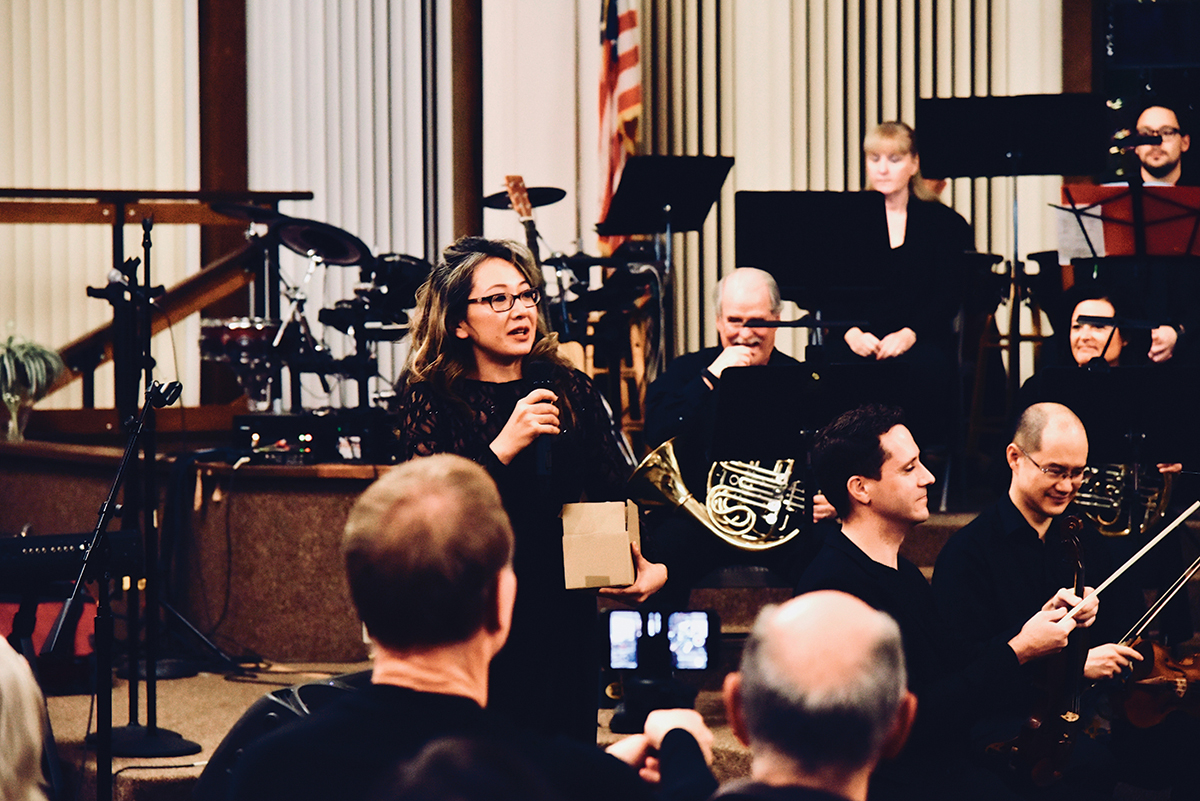


Snapshots from Tamami’s Beethoven series performed in 2017.
I had the opportunity to play on an 1823 Broadwood fortepiano which enabled me to answer a few more questions I had (besides reveling in the sheer enjoyment of playing on this instrument too). But for this landmark project I wanted to have everything that was available with a modern instrument. Modern instruments have a wider range of sounds and even notes. In a few places, I have taken the liberty of adding the lower octave where Beethoven himself might have done the same had those notes been available to him.
V: Beethoven was also very keen on adopting the latest piano innovations as he incorporated higher and lower notes in his later sonatas as they became available.
T: Absolutely. Beethoven famously expanded the piano’s range of sonorities in the Waldstein Sonata not only by taking advantage of the extra range provided in the latest pianos of the day, but he also pushed piano technique to new limits with his use of fast repetitions, trills that have to be sustained while playing melodic lines in the same hand, running octaves that sound almost like glissandos, and numerous other effects. He pushed everyone and all instruments more and more to their limits as evidenced especially by the time you get to the Ninth Symphony. He tested the boundaries of each instrument in the orchestra and the limits of performers’ abilities while making hard demands of even the singers in each section of the choir. No one is spared in the pursuit of his artistic vision! The new ideas he was implementing and how he experimented with them became progressively clearer to me as I was working on them to perform them live and to record for this project in order of composition. My study of these and other Beethoven works spans my entire life and not in any specific order, so it was not as clear then how his compositional process was evolving as it is to me today. I hope that listeners will be able to experience some of this as they listen to the works on my discs in order of composition.
V: When will the recordings be available and what are your plans for 2020 as Beethoven’s 250th birthday?
T: We are just putting the finishing touches on everything for Divine Art Recordings (distribution by Naxos) who plan for a release date around April 2020. I will be playing in a number of special concerts celebrating Beethoven’s 250th with chamber and solo recital appearances. I will also be working with my chamber orchestra the Cal Arte Ensemble to present other works by Beethoven including the complete piano trios. Since three years ago we had worked under the title of the ‘Beethoven Odyssey’ to bring to our ever growing audiences the complete piano sonatas, the complete piano and violin sonatas, and the complete concertos, We plan to work on other cycles of works by other composers but for now we are happy to be immersed in the one and only LvB. In the spirit of outreach, I recently did some part time music teaching for 280 children with two classes of music lessons per week. I chose to share with them lessons about Beethoven since December is his birth month interspersed with of course, seasonal carols. I hope the children will think of Beethoven along with holidaying ideas now each time December rolls around! A happy moment was when they spontaneously applauded hearing the end of the last movement of the Ninth.
Beethoven will certainly be at the forefront of my mind in 2020 and my hope and work will be that his love of humanity, his capacity to express so much of our shared life experiences and emotions can continue to be enjoyed by as many people as possible. Once people hear him, without exception they will hear something they can recognize, and are more often than not, hooked for life. In this world of isolation and increasingly impersonal type of social interactions, his music can bring us back ‘home’ and in him you will find a friend, for whatever circumstances you may find yourself in. If you feel joy, loneliness, sadness, triumph, laughter, love, anger, or just want to go for an interesting journey or a walk in the woods, as he liked to do, experiencing nature and all things he found great and worth living for in this world, have a listen. You are sure to find something that speaks to you that you can hold onto.
